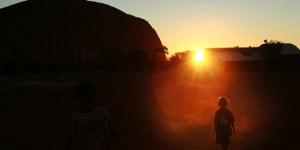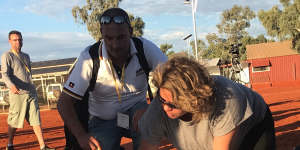Anyone scathed by it must not have read it;the review,released on Wednesday,is 100 pages of vague language about the need for governments to listen better to Indigenous people. It contains no examples of where this is being done well and where it is failing. There is also no clear guidance on how it could be done effectively. To be fair to the authoring commissioners,the priorities against which they were reviewing progress are also a bit fuzzy. In the end,the review comes off as a belated plea for a constitutionally enshrined Voice,which accidentally shows how difficult implementing the Voice would have been.

Indigenous wellbeing is not out of reach,but we must reach for the right solutions.Jason South
The review precedes the upcoming release of the next Closing the Gap dashboard,which will provide a statistical report on progress against the targets. It is a neatly timed reminder ahead of that release that nice words and good intentions alone don’t achieve goals.
It’s uncomfortable to say it,but we must if we are genuinely interested in improving outcomes for Indigenous people:the gap between Indigenous and non-Indigenous health,wealth,education and self-determination will not be solved by trying to treat Indigenous communities as somehow congenitally or temperamentally different to everyone else. Doing so has led to perverse outcomes. As Professor has repeatedly pointed out over the years,the high rates of violence and abuse in many Indigenous communities are not part of Indigenous culture,though they are often attributed to it by “well-meaning people and governments”. They are a result of conditions that can be addressed.
Indeed,people like Langton and other well-known Indigenous leaders show by example that there is no reason why Indigenous people should have shorter lives,lower levels of education,less say in public discourse,or worse life outcomes than anyone else. The gap is not about Indigeneity,it is the gap between access to the advances of Western medicine,education and urbanisation. It is,to some degree,the same gap that yawns between rural and metropolitan Australians. It is also a gap in access to participatory democracy,which is the way in which non-Indigenous communities have a say in the policies that affect them.
We can respect the desire of some Indigenous people to live on country,and we can recognise and empathise with the intergenerational trauma that has fuelled a cycle of disadvantage for some Indigenous people. But for their sakes,we must stop pretending that the gap is going to be closed in some other way than by embracing the social and medical technologies that have given non-Indigenous Australians an advantage.
According to the,the life expectancy for Indigenous girls and boys born today is now better than it was for non-Indigenous girls and boys born in the early 1960s. But of course,in the meantime,non-Indigenous Australians have also made gains.
The improvement can, from the AIHW,be attributed to “improved medical knowledge and technology,health care availability (such as the widespread accessibility to antibiotics and vaccines),improved living conditions and overall better quality of life”.
But there’s still a gap between Australians in cities and those living in rural and remote areas,who have,on average,“shorter lives,higher levels of disease and injury and poorer access to and use of health services,compared with people living in metropolitan areas”. Poorer health outcomes are also linked to economic disadvantage,including education and employment opportunities,.
Not attributable to geography but correlated with it is the use of. People living in “inner regional andouter regional and remote areas were more likely to engage in risky behaviours,such as smoking and consuming alcohol at levels that put them at risk of life-time harm,compared with people living inmajor cities”.
The good news is we can expect Indigenous life expectancy to go up in the next report. But the bad news is,it won’t be from improved access or conditions. From the,there was a 25 per cent increase in the number of people identifying as Indigenous. As a result,the proportion of Aboriginal and Torres Strait Islander people living in major cities and inner regional areas has increased,while the proportion living in outer regional,remote and very remote Australia has decreased.
It is to be expected that the increase in Indigenous people living in urban environments will shift statistical participation in education,access to housing and other key metrics of wellbeing,including employment. The “gap” as we know it might shift a little rhetorically,but it won’t be because of a qualitative change to individual lives.
Fortunately,switched-on Indigenous leaders know it and are onto it. While politely welcoming the Productivity Commission review on the ABC’sRN Breakfast,Yothu Yindi Foundation CEO laid out a vision of infrastructure – that is,increased urbanisation – for her area in the Northern Territory. She spoke about township leasing,which allows Indigenous communities to create jobs and build their own homes. And she proudly trumpeted significant advances in school attendance in her area. But perhaps most importantly,she shook off the suggestion that her foundation would be waiting around for governments to work out what the waffle in the Productivity Commission review means.

Denise Bowden,CEO of the Yothu Yindi Foundation,signing the Uluru Statement from the Heart 2017.Australian Human Rights Commission
“Real empowerment,” she said,is “for people to be able to decide their future and how their land is used”. And she emphasised the need for Indigenous families,communities and organisations to be accountable to themselves.
I’m betting her community will thrive while government is still painting on its listening ears.
Parnell Palme McGuinness is managing director at campaigns firm Agenda C. She has done work for the Liberal Party and the German Greens.